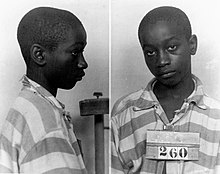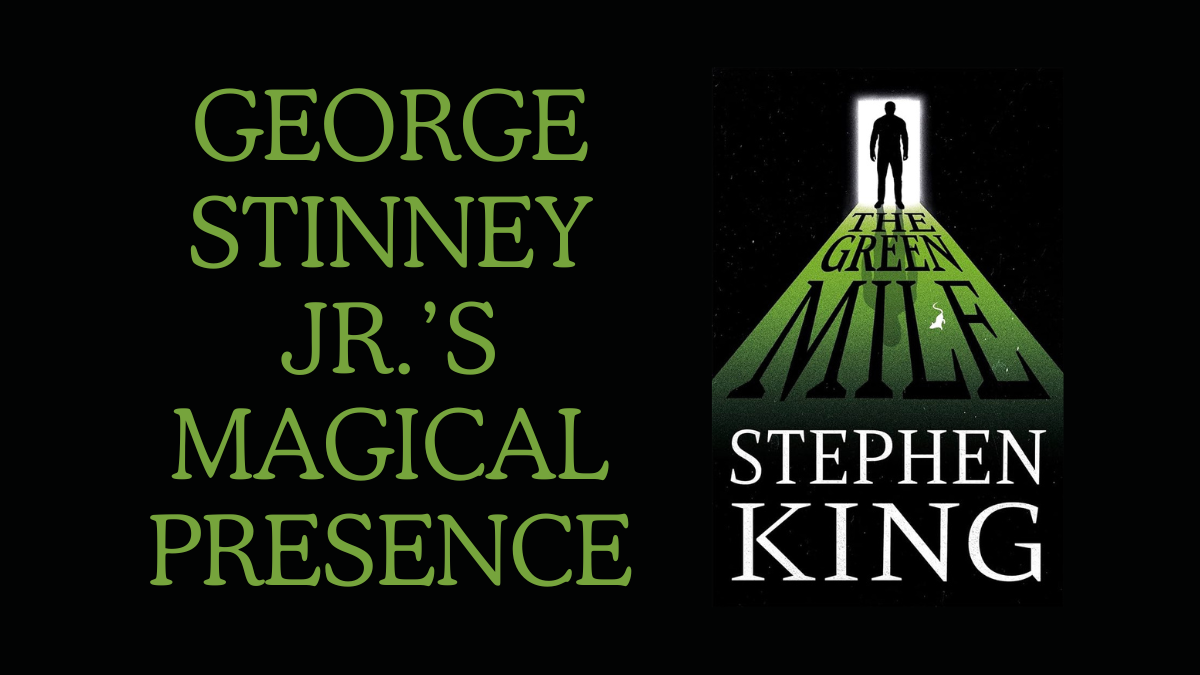George Stiney Jr.’s Magical Presence in The Green Mile leaves it’s readers to a dungeon of thoughts to rethink about the whole of American History. It has the same effect on Stephen King’s famous Book “The Green Mile,” a captivating novel which was set in the 1930s at the Cold Mountain Penitentiary’s death-row facility.
The story unfolds through the eyes of Paul Edgecombe, a correctional officer who encounters John Coffey, a man of large stature yet gentle nature, convicted for the murder of two young girls. Despite his heinous conviction, Coffey’s unexpected healing abilities and kind demeanor lead Paul to question the validity of his guilt. As the plot thickens, Paul begins to uncover the real story behind the crime.
The narrative, rich with themes of justice, mercy, racism, and faith, is a remarkable example of magical realism. Initially published in six parts in 1996, for being elected the Best Novel, it won the Bram Stoker Award and was later transformed into a highly acclaimed film.
Plot and Theme Of The Green Mile
“The Green Mile” is a profound narrative that explores the themes of justice, mercy, racism, and faith through the lens of magical realism. The story is set in the 1930s at the Cold Mountain Penitentiary’s death-row facility, known as The Green Mile, named for the color of its linoleum floor.
The protagonist, Paul Edgecombe, is a correctional officer who meets John Coffey, a large black man convicted of murdering two little girls. Despite his conviction, Coffey’s gentle demeanor and supernatural healing powers lead Paul to question his guilt. As Paul delves deeper into Coffey’s case, he uncovers the truth behind the crime.
The plot of “The Green Mile” critiques the justice system, particularly the death penalty. It questions the morality of capital punishment and highlights the potential for wrongful convictions. The character of John Coffey serves as a symbol of the innocent victims of such a system.
The theme of racism is also prevalent in the novel. Set in the racially segregated American South, the book explores the racial prejudices that influenced the judicial process. Coffey’s conviction is primarily based on the color of his skin rather than concrete evidence.
The novel explores faith through Coffey’s perceived divine healing powers, sparking discussions about miracles and a higher power.

In conclusion, “The Green Mile” is a powerful exploration of justice, mercy, racism, and faith. It uses the character of John Coffey and his supernatural abilities to question societal norms and highlight the flaws in the justice system.
Influence from George Stinney Jr.’s Life In The Green Mile
While “The Green Mile” is a work of fiction, it’s believed that the narrative was influenced by actual historical events, including the heartbreaking case of George Stinney Jr. Stinney was a 14-year-old African American boy who was unjustly convicted and executed for the murder of two young girls in 1944.
His conviction was posthumously overturned in 2014, with a court in South Carolina ruling that he had been denied a fair trial.

In the novel, John Coffey’s character bears a striking resemblance to George Stinney Jr. Both are black males wrongfully accused of killing two white girls. Despite Coffey’s kind nature and extraordinary healing powers, he, like Stinney, cannot avoid his tragic destiny.
The inclusion of elements from George Stinney Jr.’s story in “The Green Mile” provides historical and societal depth to the novel, emphasizing the racial injustices rampant in the American legal system at the time. It also enhances the novel’s exploration of themes such as innocence, guilt, and the abuse of power.
Societal Depiction of the Book Green Mile
“The Green Mile” paints a vivid picture of the societal landscape during the Great Depression in the American South. The narrative is set in a period when racial segregation was deeply entrenched, evident in the character interactions and societal norms depicted in the novel.
The novel brings to life the grim realities of the economic crisis, with characters such as Paul Edgecombe and his colleagues living under the constant threat of job loss. This fear mirrors the widespread unemployment and poverty that were hallmarks of the Great Depression.
The book also delves into the issue of racism. Despite the end of slavery over half a century before the events of the novel, the narrative shows that many white individuals were resistant to social change and failed to acknowledge the fundamental equality of all races.
The conviction of John Coffey is primarily based on his race rather than solid evidence, underscoring the racial biases that permeated the judicial process.
The theme of justice, or the lack thereof, is another significant aspect of the book. John Coffey symbolizes the innocent victims of an unjust legal system. His wrongful conviction and subsequent execution highlight the potential for miscarriages of justice, especially in cases involving racial minorities.
In summary, “The Green Mile” provides a stark exploration of the societal issues of its time, including economic hardship, racial discrimination, and a flawed legal system.
The Great Depression and the South’s Situation
The Great Depression, spanning from 1929 to 1941, was the most severe economic crisis in the history of the industrialized Western world, leading to significant changes in financial institutions, macroeconomic policy, and economic theory.
How Was The Economic Landscape Before the Depression?
Before the Great Depression, the South was already the poorest region in the United States, with a per capita income barely half the national average. It was a predominantly rural society heavily dependent on a single-crop economy, with a large population vying for limited farm income.
What Was The Impact of the Depression on the South?
The advent of the Depression only exacerbated the South’s poverty. The collapse of global commodity prices and foreign markets had a devastating impact on cotton and tobacco farmers. Overproduction led to a drastic reduction in the value of the cotton crop from $1.5 billion in 1929 to just $465 million in 1932.
How Was The Impact on Tenants and Sharecroppers?
During the time of The Great Depression, there were about 8.5 million tenants and sharecroppers. From whom 3 million were black, the onset of the Depression reinforced their sense of hopelessness and dependency. Most black Georgians were unaware of the Great Depression. Black families barely earned $100 annually, leaving them in poverty. They believed white people were catching up.
What Was The Impact on Southern Industries
Southern industries were just as vulnerable in Birmingham, U.S. Steel workers earned between ten and fifteen cents per hour. Twenty-five thousand of the city’s 108,000 workforce were unemployed, and most employed only worked part-time.
How Was The Government Response to the Depression
During the Great Depression, state and local governments dealt with revenue shortfalls by cutting spending and services and relying on sales taxes to compensate for the decline in property tax income. There were limited options for those living in rural and industrial areas and financially disadvantaged, apart from enduring difficult circumstances.
Chest could not meet Birmingham’s welfare needs. In 1929, it helped 800 families, but by 1932, it struggled to help 9,000.
Does The Green Mile Give George Stinney Jr. A New Life?
While “The Green Mile” is not a direct retelling of George Stinney Jr.’s story, the character of John Coffey does bear a striking resemblance to him. Both were black men wrongfully accused of murdering two young white girls. Despite their gentle nature and innocence, they were unable to escape their tragic fate due to the racial prejudices and injustices prevalent in the American judicial system during their time.
In a way, the novel does give a new life to George Stinney Jr. by bringing attention to his story and the broader issues of racial injustice and wrongful convictions. However, it’s important to note that John Coffey is a fictional character and his story. At the same time, it may parallel Stinney’s in some ways and is not meant to be a factual representation of Stinney’s life or experiences.
Instead, it serves as a powerful commentary on the societal issues of the time. So, while the book doesn’t give a new life to George Stinney Jr. in a literal sense, it does keep his memory alive and continues the conversation about the injustices he and many others suffered.
George Stinney Jr.’s impact on American history
The case of George Stinney Jr. serves as a stark reminder of the racial bias that has historically marred the U.S. criminal justice system. His wrongful conviction and execution in 1944, when he was just 14 years old, for the murder of two white girls in Alcolu, South Carolina, is a distressing example of the racial prejudice that was rampant during the Jim Crow era.
Stinney’s case has left an indelible mark on American history in several ways:
Illuminating Racial Bias: Stinney’s case shed light on the racial prejudices and injustices inherent in the American legal system. It highlighted the urgent need for reform and the importance of guaranteeing fair trials for all individuals, regardless of race.
Driving Legal Reforms: The injustices in Stinney’s case have spurred changes in the legal system. It has fueled debates about the minimum age for capital punishment and the necessity for adequate legal representation for defendants.
Influencing Literature and Art: Stinney’s story has inspired various works of literature and art, including Stephen King’s “The Green Mile,” which features a character reminiscent of Stinney.
Posthumous Exoneration and Historical Rectification: In 2014, Stinney’s conviction was posthumously overturned, with a South Carolina court ruling that he had been denied a fair trial. This marked a significant moment in American history, acknowledging and rectifying a historical injustice.
In summary, while George Stinney Jr.’s story is a grim chapter in American history, it has also acted as a catalyst for change and a reminder of the critical importance of justice and equality.
John Coffey of Green Mile and Geroge Stinney Jr. Made One
While John Coffey is a fictional character and George Stinney Jr. was a natural person, their stories profoundly impact how we view justice, particularly in the context of racial prejudice. Both characters symbolize innocence and the potential for wrongful convictions in a flawed judicial system.
John Coffey’s character in “The Green Mile” brings attention to these issues in a way that is accessible to a broad audience, keeping the conversation about racial injustice and wrongful convictions alive.
In this sense, Coffey’s character can be seen as glorifying or honoring the memory of George Stinney Jr. by highlighting the injustices he suffered and the need for reform in the judicial system.
On the other hand, the real-life tragedy of George Stinney Jr. lends a sense of authenticity and urgency to the issues presented in “The Green Mile.” His story is a stark reminder of the natural consequences of racial prejudice and injustice, adding depth and significance to John Coffey’s character.
In conclusion, while one is a character from a book and the other a natural person, both George Stinney Jr. and John Coffey have left a lasting impact on society by highlighting the need for justice, equality, and reform in the judicial system.
Though tragic, their stories keep the conversation about these important issues alive. So, they glorify each other by reinforcing and bringing attention to the same crucial matters.

